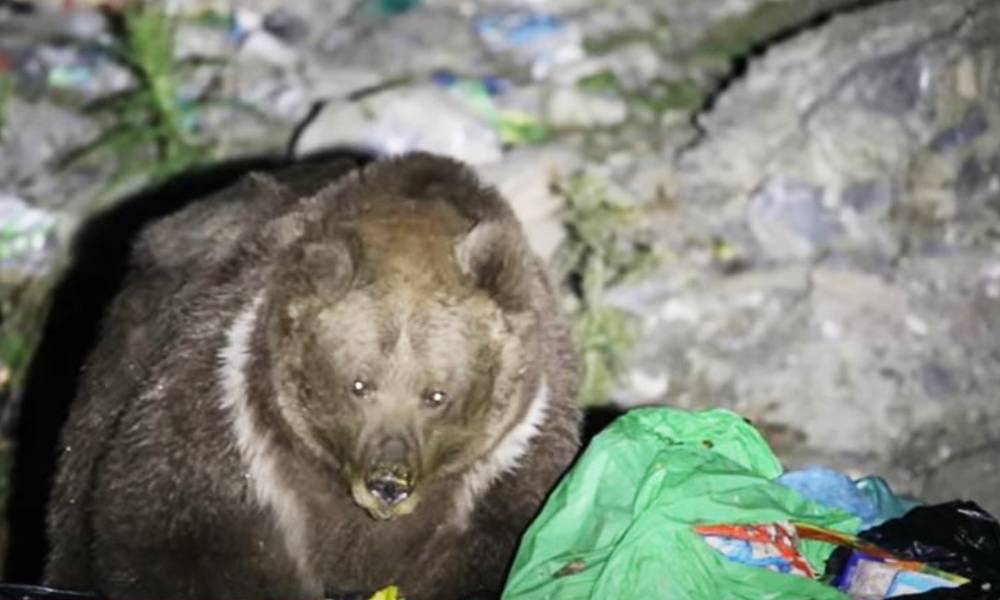
Papa Bear to Mama Bear: What’s for Dinner? We Have Nothing but Garbage
Worried about how much plastic and other trash fish and other ocean creatures are eating?
You should also concern yourself — more urgently — with the fate of the Himalayan brown bears. They are now listed as a critically endangered species with only 130 to 220 mature adults remaining in the wild.

These bears are eating their way to death by consuming plastic and other toxic materials from garbage dumps. This is among the shocking and saddening data from the report by Wildlife SOS, a conservation non-profit organization in India, and the Jammu and Kashmir Wildlife Protection Department.
“Camera traps set up by the Wildlife SOS research team revealed that brown bears were feeding on chocolate, plastic covers and other food waste like biryani, a dish that is popular in the area. Since these are not a part of the natural diet of these bears — who usually feed on grass, berries, plants and small mammals — these items can be harmful to the gastric intestinal structure of the brown bear. It can cause severe ailments and even shorten their life span,” Swaminathan Shanmugavelu, a Wildlife SOS senior biologist, told Newsweek. “Such behaviours can also be passed on from mother to cub, leading to a loss in natural foraging traits, impacting the survival rate of the brown bear population in the region.”

The investigation of the ecological and human-bear conflict in the Kashmir region was prompted by the escalating incidence of attacks, human deaths and injuries, and damages to livestock and crops primarily caused by black/brown bears, along with leopards.
But humans have also caused an alarming decline in the brown bear population whom they’ve been hunting for their fur, claws, and internal organs. Also, farmers have joined in the killing of brown bears to protect their crops and animals.

Now, the world is becoming smaller and smaller for bears in spite of their dwindling population. With garbage dumps becoming their primary source of food, bears are drawing even closer to human settlements. What’s more, since the behavior could be passed on to their offspring, these animals will just keep coming back to these areas.
In order to protect both humans and bears, Wildlife SOS has made recommendations to the government that include moving dumpsites to locations considerably far from people’s settlements, proper waste management and disposal, fencing, and bear-proofing of garbage bins. But is there time enough to save these hungry, desperate bears? Can we give them back their home?